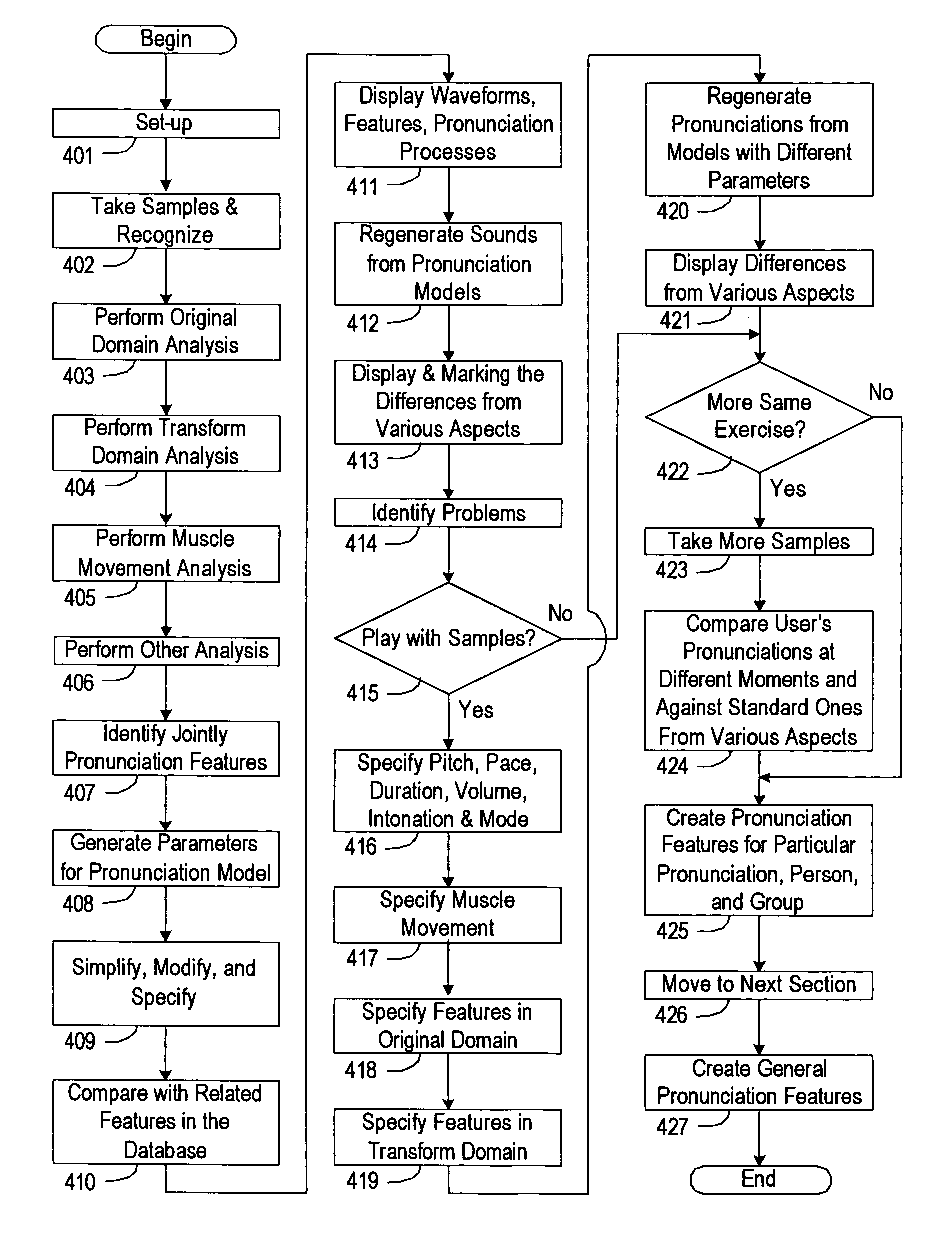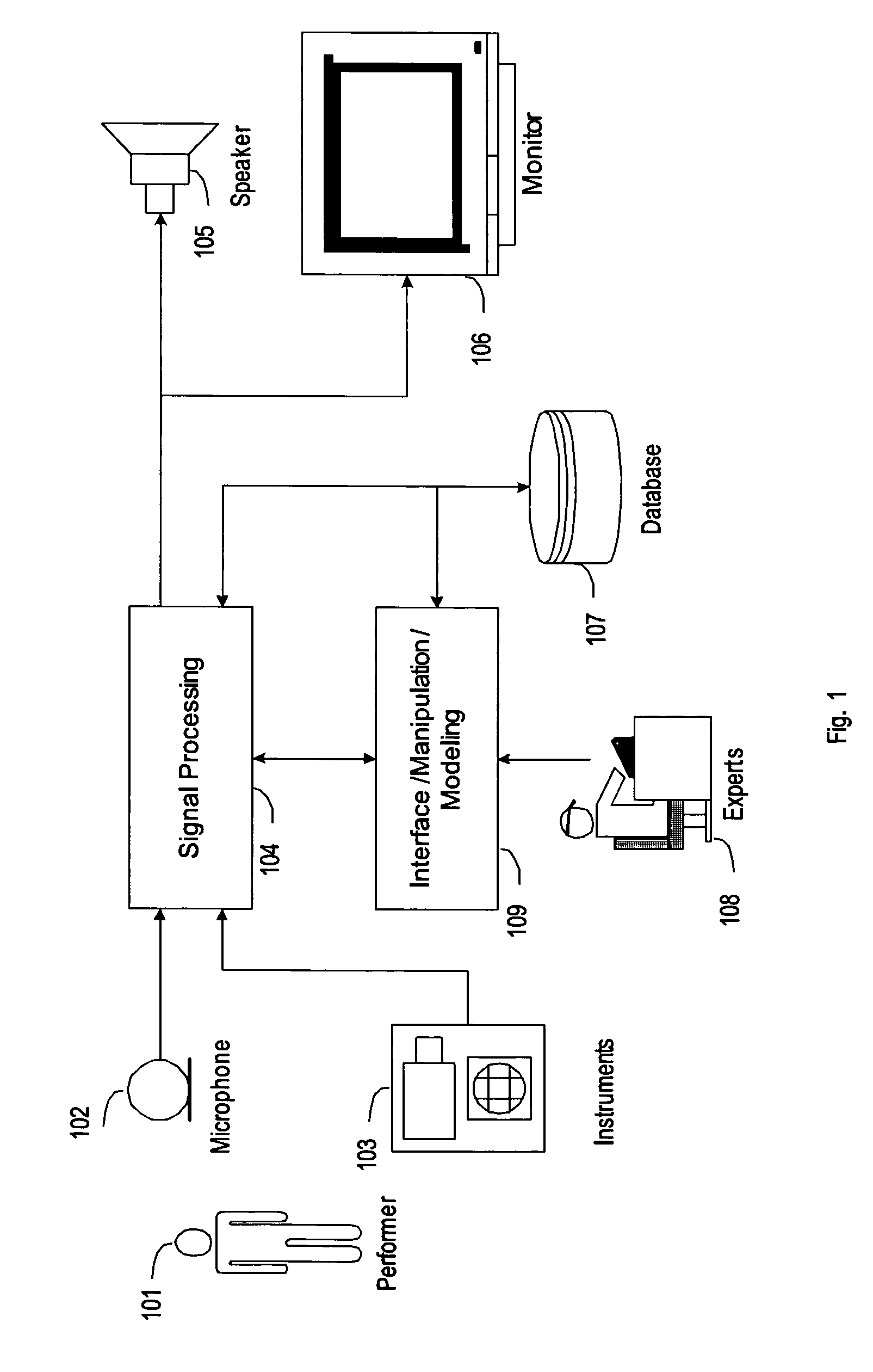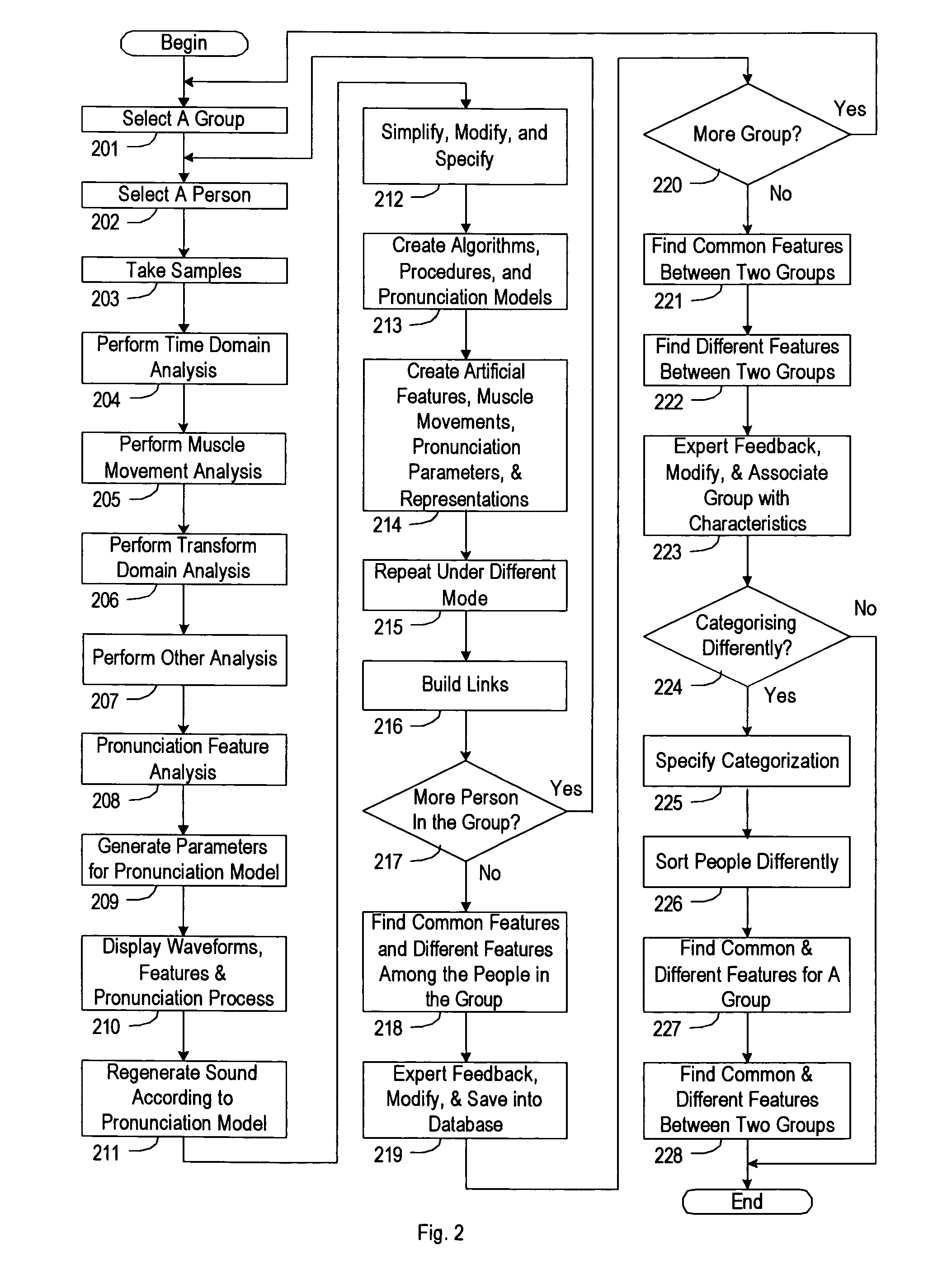Pronunciation training system
- Summary
- Abstract
- Description
- Claims
- Application Information
AI Technical Summary
Benefits of technology
Problems solved by technology
Method used
Image
Examples
Embodiment Construction
[0033] The system generally has two major portions. The first portion is to extract pronunciation features for individual persons, to find the common features among a group of persons from same countries, same regions, or same areas, to distinguish the pronunciation features among different people or people at different stages, to describe muscle movements of pronunciation organs, and to link pronunciation features with corresponding muscle movements. The second portion is to extract the pronunciation features from the captured information of a user, to compare them with the pronunciation features pre-saved in a database, to reconstruct a pronunciation process, to display the regenerated pronunciation process in slow, regular, or fast pace, to modify a pronunciation process by letting a user specifying pronunciation organ movements, pitches, speeds, volumes, durations, and tones, and to compare pronunciations from different aspects and in various diagrams.
[0034]FIG. 1 shows the bas...
PUM
 Login to View More
Login to View More Abstract
Description
Claims
Application Information
 Login to View More
Login to View More - R&D
- Intellectual Property
- Life Sciences
- Materials
- Tech Scout
- Unparalleled Data Quality
- Higher Quality Content
- 60% Fewer Hallucinations
Browse by: Latest US Patents, China's latest patents, Technical Efficacy Thesaurus, Application Domain, Technology Topic, Popular Technical Reports.
© 2025 PatSnap. All rights reserved.Legal|Privacy policy|Modern Slavery Act Transparency Statement|Sitemap|About US| Contact US: help@patsnap.com



